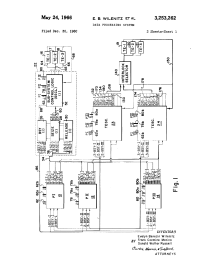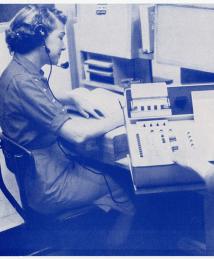Evelyn Berezin
Evelyn Berezin was an expert in logic design and data transmission. She designed one of the earliest computer reservations systems for airlines and founded a company that developed the first computerized standalone word processor for business use.
Berezin was born in the Bronx, New York, in 1925. She was the daughter of working-class, immigrant parents — her father was a furrier and her mother a seamstress. She loved to read, and she became interested in science and technology when she began reading her older brother’s copies of Astounding Science Fiction magazines.
When Berezin entered high school and began taking courses at Hunter College at the age of 16, the possibility of a future working in science became a reality. She consistently earned excellent grades and was even offered a job as a lab technician. She recalled a professor offering her the position immediately after the attacks on Pearl Harbor on Dec. 7, 1941, when many of the young men who previously held these jobs were being drafted for the war. She accepted the offer, managing a tight schedule between her full-time work during the day and classes at night.
In 1945, Berezin earned a bachelor’s degree in physics from New York University, where she also completed coursework for a doctorate in physics. From 1951 to 1969, Berezin worked for several computer startup companies, learning logic design and other systems. Challenging societal norms and barriers, she was often the first or only woman technologist at these companies.
Berezin joined Teleregister Corp. in 1957 as the head of logic design. She and her team soon began developing the Instamatic reservations system for United Airlines — at the time, the largest interconnected electronic data processing system ever built for business use.
The Instamatic was operational by 1961, using microwave link technology and transistors to transmit and process data on airline reservations in a matter of seconds. This sophisticated communication system connected terminals in 60 cities nationwide to a central computer in Denver. The system was structured so problems were isolated and resolved without affecting the entire network. In 11 years of operation, the central computer never suffered a shutdown.
Following this success, in 1969, Berezin and three colleagues founded Redactron, where they developed the first computerized word processor. One of the earliest commercial products to contain a microprocessor, the Data Secretary debuted in 1971 and boasted advanced features including the ability to record and play back what users had typed, so it could be edited or reprinted. Users also could delete or cut and paste text.
As one of the first electronic word processors aimed at simplifying secretarial work, the Data Secretary helped open up new career growth opportunities for women in business and technology. To promote the product, Berezin took out an ad in Ms. Magazine in 1971 and included her personal contact information to provide “Free the Secretary” buttons and stickers.
By 1974, Redactron’s total revenue was $16.2 million. Berezin was named one of the Top 100 Businesswomen in the U.S. by BusinessWeek magazine in 1976, and she was the only woman to be featured as the president of a technology company. She said of her leadership, “The most marvelous part of running your own business is that you can decide what you want to do and then try to do it. You just have to have a sense of direction.”
Redactron, which had grown from a startup with less than 10 employees to a company employing just under 500, was sold to the Burroughs Corp. in 1976, and Berezin served as president of its Redactron Division until 1980. She also began working in venture capitalism, sat on the boards of many public companies including Cigna, Koppers Co., Datapoint Corp. and Standard Microsystems Corp., and was a committed philanthropist who, along with her husband, gave generously to Stony Brook University.
Berezin held 13 U.S. patents and was inducted into the Long Island Technology Hall of Fame in 2006 and the Women in Technology International (WITI) Hall of Fame in 2011. In 2015, she was made a fellow of the Computer History Museum.


